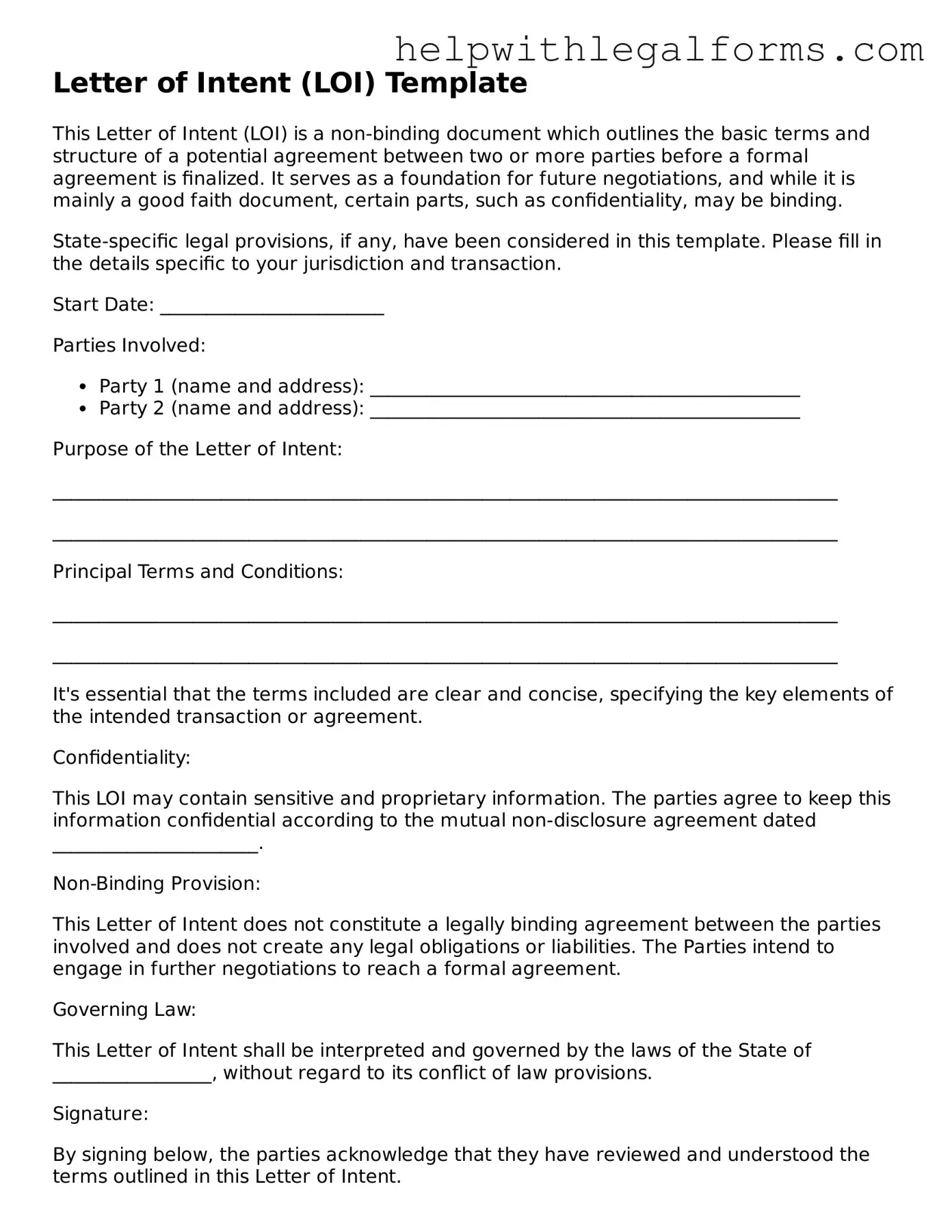What is a Letter of Intent?
A Letter of Intent (LOI) is essentially a document outlining one or more agreements between two or more parties before the agreements are finalized. It's like a preliminary agreement to agree, often used in business transactions, such as mergers and acquisitions, job offers, or when securing services. It's a way to communicate mutual understanding and intent without entering into a legally binding contract right away.
Is a Letter of Intent legally binding?
The legal binding nature of a Letter of Intent depends on its contents. Generally, an LOI itself is not considered a binding contract because it represents an agreement to enter into a contract in the future. However, if it includes certain provisions that are meant to be binding, such as confidentiality agreements or a promise not to negotiate with other parties, those parts can be legally enforceable. Therefore, it's crucial to clearly specify which parts are binding and non-binding.
What should be included in a Letter of Intent?
A well-crafted Letter of Intent should include information such as the names and addresses of all parties involved, a detailed description of the proposed agreement or transaction, any binding and non-binding provisions, the time frame for negotiations or the deadline for the final agreement, and any contingencies or conditions that must be met. Including clear terms and conditions helps prevent misunderstandings and provides a roadmap for the official agreement.
How does a Letter of Intent differ from a contract?
A contract is a legally enforceable agreement between parties to do (or not do) something, while a Letter of Intent is more of a preliminary document that outlines the basics of a future agreement. Contracts require more detailed terms and have stricter legal requirements for validity. Letters of Intent typically signal the beginning of serious negotiations and are less formal than contracts, often lacking the full legal enforceability of a contract.
Can I withdraw from a Letter of Intent?
Yes, since a Letter of Intent is generally not legally binding regarding the main transaction, parties can usually withdraw without facing legal consequences—assuming the LOI correctly specifies which (if any) parts are binding. However, withdrawing could potentially breach any binding provisions like nondisclosure agreements or exclusivity clauses, leading to legal liabilities. It's important to understand the implications before backing out.
How long is a Letter of Intent valid?
The validity period of a Letter of Intent depends on what the parties agree upon within the letter. Typically, the LOI will specify a timeframe or deadline by which the agreement must be finalized or negotiations concluded. If no timeframe is mentioned, the letter's validity may be subject to interpretation based on the circumstances, but it's always advisable to include an explicit duration to avoid ambiguity.
Is it necessary to have a lawyer review a Letter of Intent?
While it's not strictly necessary, having a lawyer review a Letter of Intent is highly recommended, especially for significant transactions. A lawyer can help identify any potentially legally binding clauses, clarify the implications of certain terms, and suggest revisions to protect your interests. This step can prevent costly misunderstandings or legal disputes down the line.
Can a Letter of Intent include conditions?
Yes, including conditions in a Letter of Intent is quite common. These conditions, or contingencies, outline specific requirements that must be met for the transaction to proceed, such as securing financing, passing due diligence processes, or obtaining regulatory approvals. Conditions help manage expectations and ensure both parties are on the same page regarding what needs to happen before a full agreement is reached.
What happens after a Letter of Intent is signed?
After a Letter of Intent is signed, the next steps typically involve negotiating the finer details of the agreement or transaction, conducting due diligence (if necessary), and working towards drafting and signing a formal contract or agreement. The LOI serves as a guide for these negotiations, outlining the terms and understanding that the parties agreed upon. It's a time for both sides to thoroughly vet the deal and iron out any discrepancies or concerns.
Does a Letter of Intent need to be notarized?
Typically, a Letter of Intent does not need to be notarized. Since it's not generally a legally binding document (except for any specific binding provisions), notarization is not required for the document to be effective. However, the parties may choose to notarize the LOI for added formality or in specific cases where a notarized document might be necessary due to the nature of the transaction.
